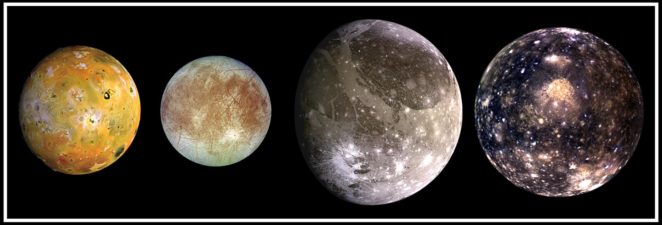
The planet Jupiter is known to have at least 69 moons. Of
these, eight are reckoned to be “natural” satellites in that they were formed
from material left in orbit after the formation of the host planet, but the
rest (the “irregular” moons) have been captured by Jupiter’s gravity during the
billions of years since that happened.
The eight natural satellites comprise two groups. There are
four small inner moons – Metis, Adrastea, Amalthea and Thebe – and four outer
moons that are each the size of planets in the inner solar system. These moons
are Io, Europa, Ganymede and Callisto. These are also known as the “Galilean”
moons because they were discovered by Galileo in 1610.
Most of the irregular moons belong to one of four groups,
each of which was originally a single minor planet that was torn apart when it
got too close to Jupiter. Each group contains a single moderate-sized
satellite, these being Himalia, Carme, Ananke and Pasiphae.
The names of the moons derive from Greek mythology.
Originally the names were those of women (including nymphs) who were seduced by
Zeus (Jupiter in Roman mythology). However, even Zeus’s amorous activities were
insufficient for the naming on this basis of all the moons that have been
discovered in more recent years, mainly thanks to the Voyager space probes.
Since 2004 newly discovered moons have been given the names of offspring of
Zeus and his conquests.
Most people know about Saturn’s ring system, but may not be
aware that Jupiter also has rings. These are not visible from Earth but have
been detected by probes flying past the planet. The rings were probably created
by meteor impacts on the inner planets that ejected dust into Jupiter’s orbit.
No comments:
Post a Comment